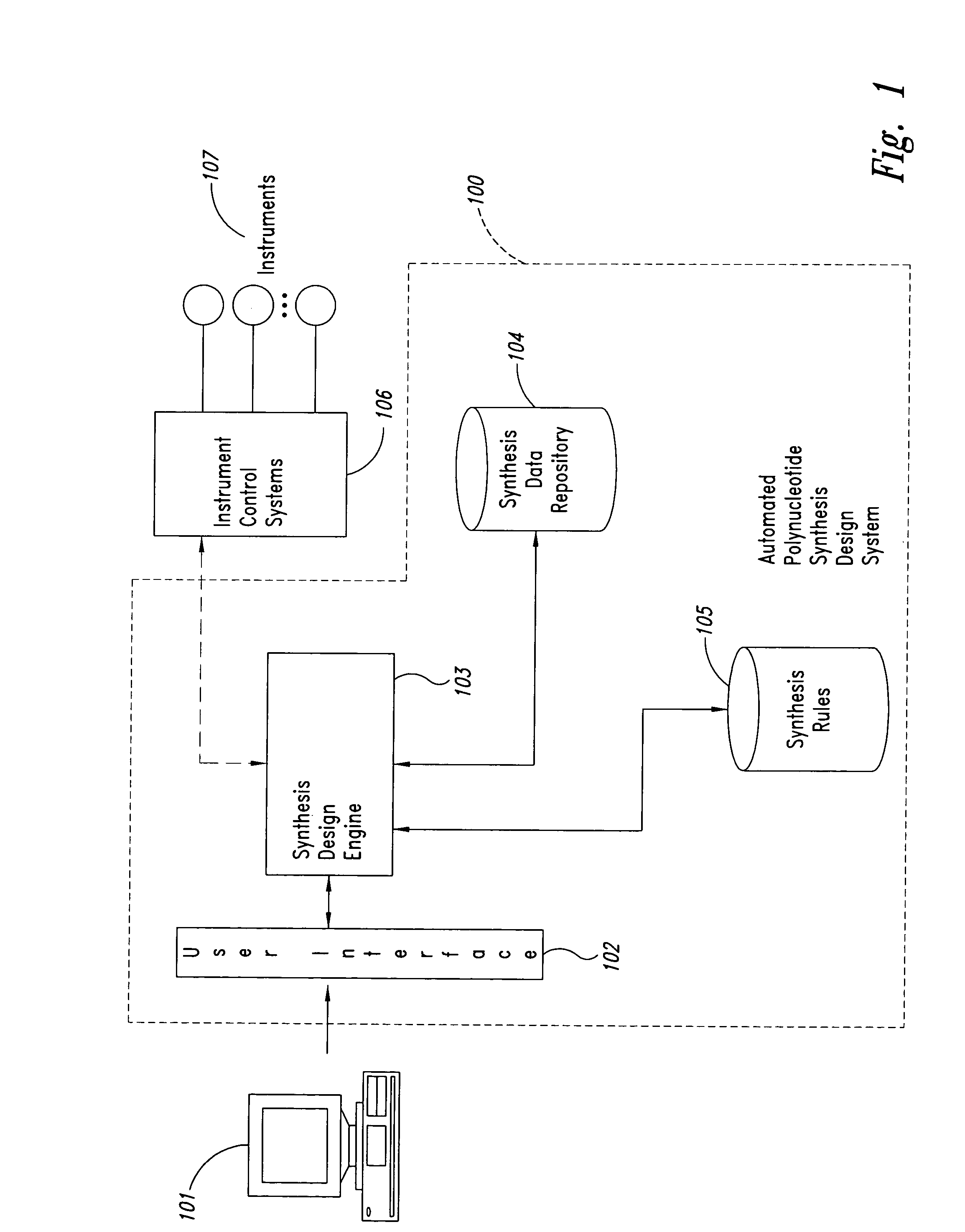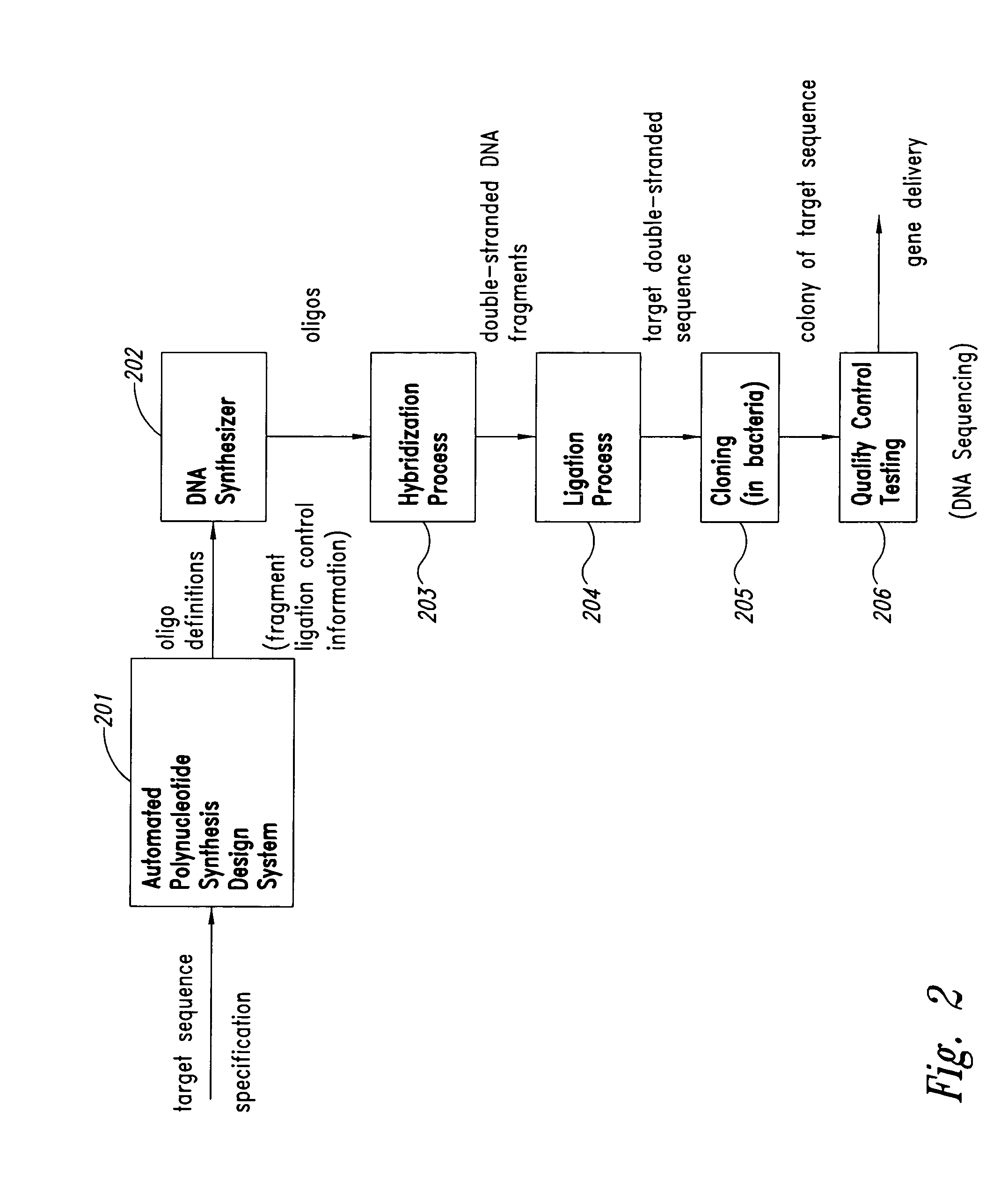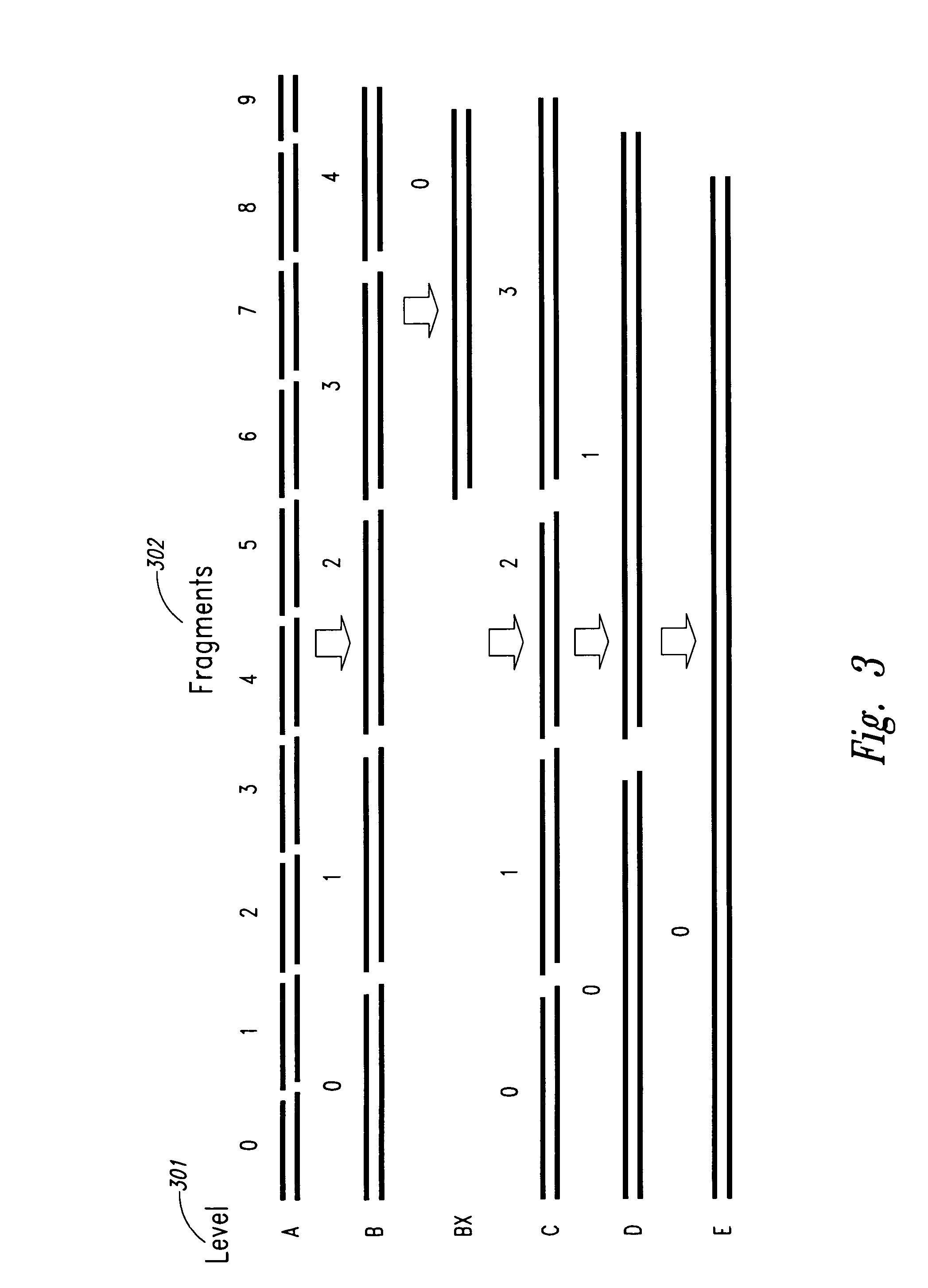Method and system for polynucleotide synthesis
a polynucleotide and polynucleotide technology, applied in the field of methods and systems for synthesizing polynucleotides, can solve the problems of incorrect or undesired synthetic gene sequences, long gene sequences to synthesize using traditional techniques, and bottlenecks in current genetic research, so as to minimize the synthesis errors and minimize the incorrect joining of fragments
- Summary
- Abstract
- Description
- Claims
- Application Information
AI Technical Summary
Benefits of technology
Problems solved by technology
Method used
Image
Examples
example 1
Synthesis of 5′-Phosphorylated Oligonucleotides and Formation of Duplex Fragments
[0112]The oligonucleotides used in the ligation experiments are prepared using an Oligo 1000M DNA Synthesizer (Beckman Coulter, Inc, Fullerton, Calif.) using Beckman 30 nM DNA Synthesis Columns. All standard phosphoramidites and ancillary synthesis reagents are obtained from Glen Research, Inc. (Sterling, Va.). Chemical phosphorylation of the oligonucleotides is done with the Chemical Phosphorylation II (Glen Research). Concentrated ammonia is obtained from Fisher Scientific (Springfield, N.J.). 40% N-methylamine is obtained from Fluka Chemical Corporation (Milwaukee, Wis.). After cleavage from the solid support, the oligonucleotides are Trityl On purified using Poly-Pak Cartridges according to the instruction manual provided by Glen Research. Reagents for Trityl On purification are HPLC-grade acetonitrile and water obtained from Burdick & Jackson (Muskegon, Mich.). Triethylammonium acetate (TEAA), pH 7...
example 2
Ligation Experiments
[0114]For every two fragments (designated A and B) there are 3 ligation experiments: 2 self ligations (A alone and B alone) and a normal ligation (A combined with B). Each ligation uses 500 picomoles of a pair of double-stranded oligonucleotides, i.e., a DNA fragment, 3 microliters of 10× ligation buffer (Fermentas Inc., Hanover, Md.), 10 units of T4 DNA ligase (product # EL0016, Fermentas) and water to make a total volume of 30 microliters. All duplexes are ligated together under the same conditions. Each ligation mix is incubated at 37° C. for 60 minutes, heated to 65° C. for 10 minutes.
[0115]The results from this set of ligation experiments are evaluated to determine the overhangs present in A and B will tend to undergo normal ligation or self ligation. The procedure can be followed for any set of possible overhang sequences. When the overhang has only two nucleotides, then there are 16 possible overhang sequences in each fragment end, and with two fragments t...
PUM
 Login to View More
Login to View More Abstract
Description
Claims
Application Information
 Login to View More
Login to View More - R&D
- Intellectual Property
- Life Sciences
- Materials
- Tech Scout
- Unparalleled Data Quality
- Higher Quality Content
- 60% Fewer Hallucinations
Browse by: Latest US Patents, China's latest patents, Technical Efficacy Thesaurus, Application Domain, Technology Topic, Popular Technical Reports.
© 2025 PatSnap. All rights reserved.Legal|Privacy policy|Modern Slavery Act Transparency Statement|Sitemap|About US| Contact US: help@patsnap.com



